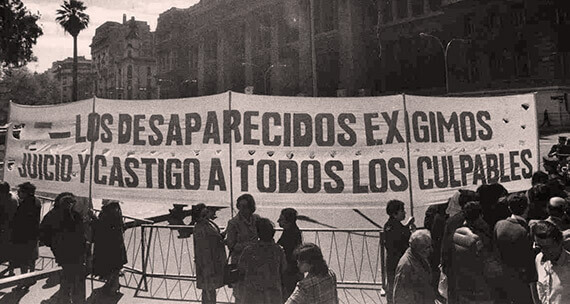Submitted by Melissa McNeilly on

This perspective was contributed by Lisa Peterson-de la Cueva, New Tactics in Human Rights Training Officer.
Here at New Tactics, we are lucky to work with some impressive organizations. Many of these are organizations whose purpose is to document past and current human rights abuses, often in difficult and dangerous circumstances. They all have a common hope: to bring accountability to perpetrators and healing to victims.
One of these organizations, Memoria Abierta in Argentina, has spent over two decades preserving and archiving information from the last dictatorship in Argentina. Memoria Abierta is an alliance of Argentinian human rights organizations that promotes memory of violations, truth and justice for victims, and strengthened democracy for the future.
As a program of the Center for Victims of Torture, New Tactics has been engaged with Memoria Abierta since 2003. Back in 2003-2004, New Tactics worked with Memoria Abierta to detail their collaborative processes for archiving memory. Their early processes are documented in one of our collection of tactical notebooks called, Open Memory: Using inter-institutional cooperation to facilitate access to human rights.
Two decades later, this organization still stands out to us at New Tactics for two reasons: 1) for what they have done to document the atrocities of the Argentine Military junta, and 2) for how they do it in such a collaborative manner.
Because of Memoria Abierta’s successful documentation process, New Tactics adapted their tactical case study for a workshop we held with Latin American activists. This case study provided an excellent example for training participants to use in exploring our Evaluation Advancing Advocacy (E2A) toolkit. Memoria Abierta’s case study helped us imagine how human rights advocates could use relevant advocacy evaluation tools to strengthen their advocacy strategy while simultaneously evaluating their efforts.
We recently had the opportunity to talk to Memoria Abierta about their ongoing work throughout Latin America. We learned that they have developed two new methodological booklets about their archival and documentary work. These booklets (currently available in Spanish) provide guides for preserving information for historical memory that could be useful to similar human rights-based organizations.
Here is a brief overview of the two new guides:
Guide #1: ARCHIVES AND TESTIMONY: Methodology from Memoria Abierta’s Oral Archive
This new edition of a guide created in 2011 outlines structures and processes that human rights archival and documentation groups can use to:
- develop goals
- gather testimonies
- store and archive information, and
- catalogue human rights abuses
Memoria Abierta additionally outlines some lessons learned from their oral history documentation on how to make documentation open and accessible to the public.
Guide #2: ARCHIVES AND TESTIMONY: A Guide to Working with Archives of Civil Society Organizations
Their second, more narrative guide, provides a broader context for lessons in documentation and archiving human rights abuses. These lessons are based on more than two decades of Memoria Abierta’s experience. It expands on the work documented by New Tactics back in 2003. This guide adds vivid and descriptive photos outlining the challenges and realities of preserving history.
Memoria Abierta’s archive has successfully advanced accountability for the crimes of the Argentine dictatorship. While these guides are currently available in Spanish, they have tremendous applicability beyond Latin America. There are many communities across the globe in need of preserving their testimony, documents and history. We hope the greater New Tactics community can learn from the lessons they have documented in these two publications.
Here we offer more resources from New Tactics on documenting human rights abuses, preserving memory, and truth and reconciliation:
-
Memoria Abierta Case Study (2005)
-
Documenting Violations: Choosing the Right Approach
-
Archiving Human Rights for Advocacy, Justice and Memory
-
The Power of Place: Sites of Conscience
-
Creating a Virtual Exhibition to Remember Victims
-
Reconciliation Post-Conflict: Approaches, Practices and Realities
-
Healing of Memories: Overcoming the Wounds of History
-
Storytelling for Truth and Reconciliation
-
Establishing a formal truth commission to investigate and acknowledge gross human rights violations


